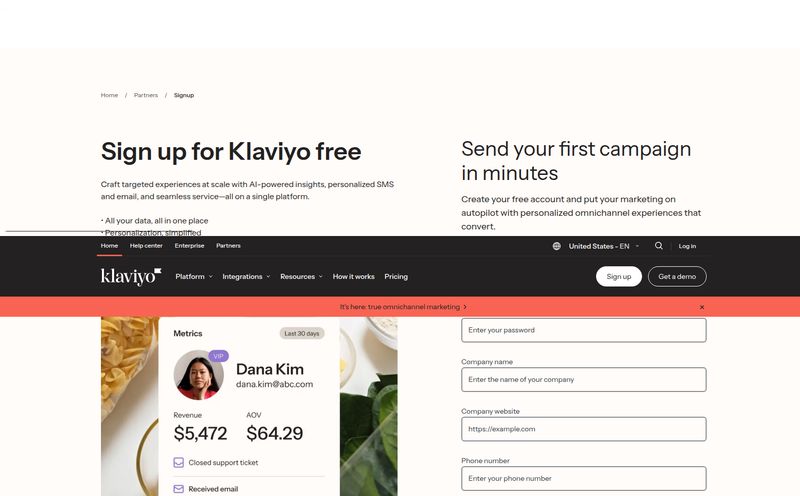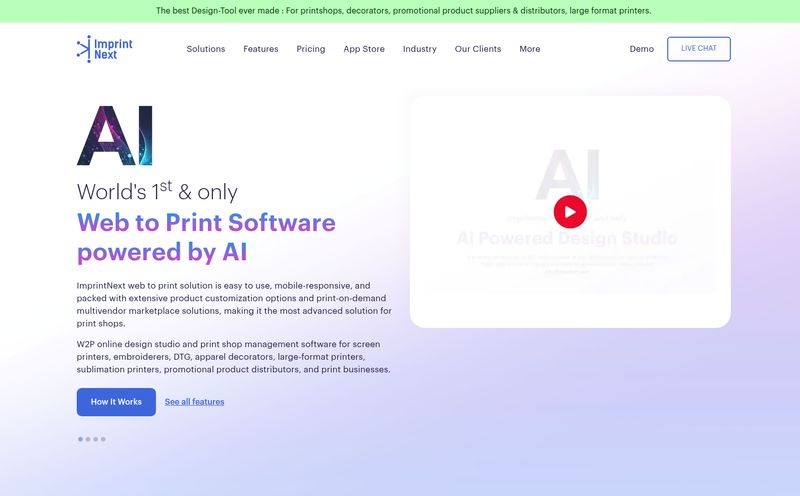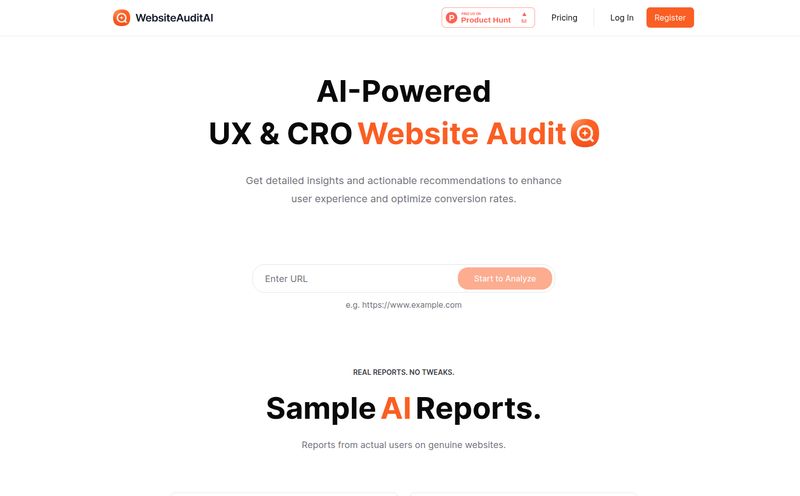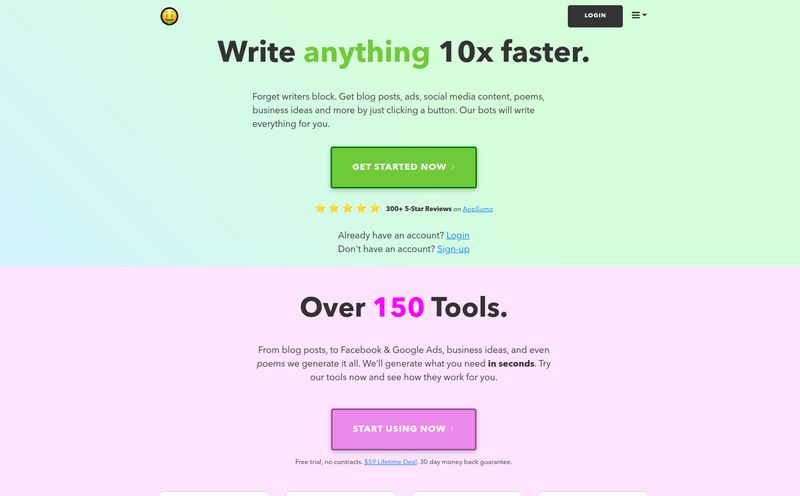We’ve all been there. Staring at our own website for so long that the words blur together and the design just… exists. We know it could be better. We feel it in our bones. But figuring out what to change? That’s another story entirely. It's a classic case of what I call 'website blindness'—you’re just too close to see the smudges on the glass anymore.
For years, the answer has been a grueling cycle of A/B testing, pouring over analytics, and maybe hiring a pricey consultant to tell you your call-to-action button is the wrong shade of orange. It's a rabbit hole. And honestly who has time for that?
So when a tool like Behavly pops up on my radar, claiming to be an “AI companion” that serves up simple, science-backed tweaks, my ears perk up. Part of me is skeptical, of course. The SEO and traffic-gen world is littered with tools that promise the moon and deliver a handful of space dust. But another part, the part that loves efficiency and clever tech, was genuinely curious. Could this thing really help break through the noise and offer actionable advice? I had to find out.
What Exactly Is Behavly Supposed To Do?
Let's get one thing straight right away. Behavly isn't trying to be an all-in-one platform like Hotjar or Crazy Egg. It's not for deep, quantitative data dives. It won't build you a new website from scratch.
Think of it more like an AI sparring partner. It’s the fresh pair of eyes that you desperately need. You feed it your website's URL, and it comes back with a punch list of suggestions focused on three key areas: copywriting, visuals, and general user experience. The whole premise is built on overcoming that dreaded decision paralysis. Instead of a mountain of data, it gives you a small, actionable to-do list.
The suggestions are based on principles of audience psychology—things that are known to influence human behavior. It’s less about arbitrary design choices and more about making your site clearer, more persuasive, and just plain easier to use. Coming from the team at DevriX, a reputable WordPress development agency, it has a solid foundation, which gave me a bit more confidence from the get-go.
My First Spin with Behavly: A Quick Walkthrough
I’m a hands-on kind of guy, so I grabbed the URL of an old side project—a landing page that I always felt was underperforming—and took Behavly for a spin. The process is, and I don't say this lightly, incredibly simple.
It really is just three steps:
- You give it a URL. I just copied and pasted the address of my landing page. Done.
- You choose a focus. It asks if you want suggestions for visual, textual, or general changes. I started with textual, because copy is king, right?
- You get your suggestions. In less time than it takes to make a cup of coffee, it came back with a handful of ideas.
The suggestions were surprisingly specific. It wasn't just “improve your headline.” It was more like, “Change 'Spread the cost of your car with fixed monthly payments' to 'Drive Now, Pay Later: Fixed Monthly Payments' for more direct, benefit-driven language.” It also suggested standardizing the CTA button color for better visual consistency and making a vague promise about financing more tangible by adding a simple estimate calculator. These are the kinds of small hinges that swing big doors in the world of conversion rate optimization (CRO).
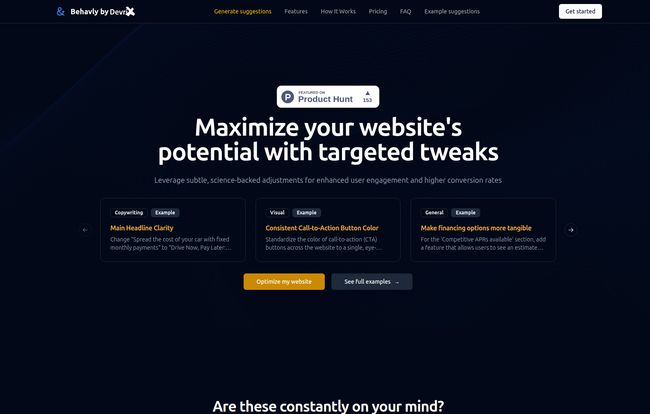
Visit Behavly
The Good Stuff: Where Behavly Really Shines
The Perfect Cure for 'Analysis Paralysis'
This is, for me, Behavly's biggest win. The sheer volume of data we have access to as marketers can be crippling. Where do you even start? Behavly cuts through that by giving you a defined starting line. You get a few clear, concise suggestions that you can implement right away. It's all about building momentum. Making one small, positive change is infinitely better than planning ten big ones you never get around to.
Simplicity Is Its Superpower
There's no clunky interface, no month-long onboarding process, no 100-page user manual. The beauty of this tool is its restraint. The process is so streamlined that literally anyone, regardless of their technical know-how, can use it. This lowers the barrier to entry for website optimization, which has historically been a pretty gatekept field.
Psychology-Backed Tweaks Feel Smarter
I was impressed that the suggestions felt rooted in genuine conversion principles. Things like improving clarity, reducing friction, using persuasive language, and creating visual hierarchy. It's not just pulling random ideas out of a hat. It's applying a proven framework, which makes the suggestions feel much more credible. As Lucas C., a startup founder, is quoted on their site:
The AI's understanding of how language influences behavior is a game-changer for startups seeking a competitive edge.And I have to agree with that sentiment.
Let's Be Real: The Limitations and Caveats
Okay, it’s not all sunshine and soaring conversion rates. No tool is a magic wand, and it’s important to understand where Behavly fits and what it doesn’t do.
It’s AI, Not a Mind Reader
An AI, no matter how smart, can't fully grasp the intricate nuances of your specific brand voice or your deeply researched customer persona. It provides suggestions based on general best practices. They're fantastic starting points, but you still need to apply your own human judgment. Use its ideas as a hypothesis, not as gospel.
The Scope Is Specific
If your website has fundamental flaws—like a confusing site structure or a broken checkout process—Behavly isn’t the tool to diagnose that. It’s designed for tweaks, not total overhauls. It’s for optimizing a page that’s already functional, not for fixing one that's fundamentally broken.
The Credit System: A Double-Edged Sword
I have mixed feelings about the pricing model. On one hand, I LOVE that it's not another monthly subscription draining my bank account. On the other hand, a credit-based system means every click to 'Generate Suggestions' has a tangible cost, which might make you hesitant to experiment freely. It's a classic pay-as-you-go tradeoff.
Breaking Down the Behavly Pricing
The pricing is straightforward, which I appreciate. There are no hidden fees or confusing tiers. You're essentially buying a bundle of credits, and one analysis (a set of suggestions for one URL) costs 20 credits.
| Plan | Price | Credits | Best For |
|---|---|---|---|
| One-Time Payment | $50 | 40 Credits (2 analyses) | A quick check-up on a key landing page or your homepage. |
| One-Time Payment | $200 | 200 Credits (10 analyses) | Agencies, freelancers, or businesses with multiple pages to optimize. Includes priority support. |
In my opinion, the $50 plan is a no-brainer for any small business owner to get a quick, expert-level audit. The $200 plan offers much better value if you know you'll be using it on several client sites or across your own sales funnel. You can check out the full details on their pricing page.
Who Is Behavly For? (And Who Should Probably Skip It?)
This tool hits a real sweet spot for a certain type of user. Behavly is perfect for you if you are:
A startup founder or small business owner wearing multiple hats who needs quick, actionable feedback without the hefty consultant fee.
A DIY marketer or blogger looking to improve user engagement and conversions on key pages.
A freelance designer or developer who wants to add value for clients by providing data-backed UX suggestions.
However, you might want to skip it if:
You're part of a large enterprise with a dedicated CRO team and a suite of enterprise-level tools like Optimizely or VWO. Behavly complements these tools by speeding up idea generation, but it doesn't replace them.
You're looking for deep quantitative analysis, heatmaps, or session recordings. Again, think of Behavly as the idea generator, not the data validator.
Final Thoughts: So, Is Behavly Worth the Credits?
After spending some time with it, I'm genuinely impressed. Behavly knows exactly what it is: a sharp, focused, and incredibly simple tool designed to do one thing well. It provides smart, actionable suggestions to improve your website.
That 'AI sparring partner' analogy really holds up. It's not here to take over your job; it's here to make you better at it by pointing out the things you've stopped seeing. For the cost of a nice dinner, it can give you a handful of insights that could easily pay for itself with just a few extra sales or sign-ups. In my book, that's a pretty fantastic return on investment.
It's a clever application of AI that solves a real-world problem for a lot of people. It’s not the future of CRO, but it's a very, very useful part of it.
Frequently Asked Questions
- How does Behavly analyze my website?
- Behavly uses a trained AI to scan your page's code and content. It then compares what it finds against a database of established psychological principles and UX best practices to identify areas for improvement in your copy, design, and layout.
- Are the suggestions hard to implement?
- Not at all. The suggestions are intentionally designed to be simple tweaks. Most are minor copy changes or small visual adjustments that don't require deep technical knowledge or a developer's help to implement.
- What's the difference between Behavly and A/B testing?
- They serve different purposes that actually complement each other. Behavly helps with the first step: generating a smart hypothesis. It gives you the idea of what to change. A/B testing is the process you would use afterward to scientifically prove if that change actually works for your specific audience.
- Is it a one-time payment or a subscription?
- It's a one-time payment. You buy a package of credits, and you use them as you need them. There are no recurring monthly or annual fees, which is a huge plus.
- Can it work for any type of website?
- Yes, the principles of clear communication and good user experience are universal. Whether you run a SaaS business, an ecommerce store, a local service website, or a personal blog, the suggestions to improve clarity and persuasion will be relevant.
- Do you offer refunds?
- According to their website FAQ, they have a refund policy. It's always best to check the most current terms on their official site for specific details.
